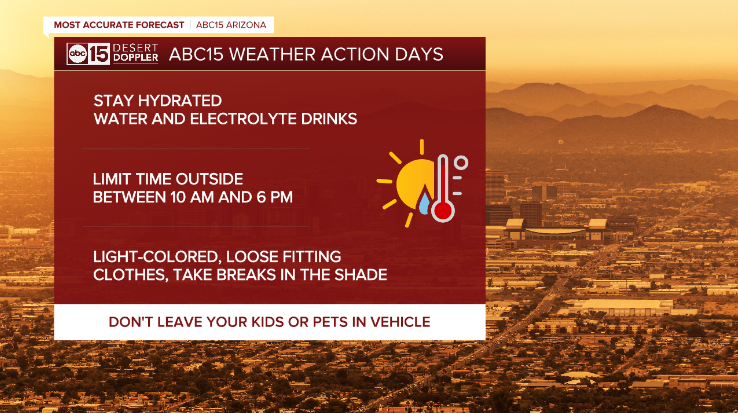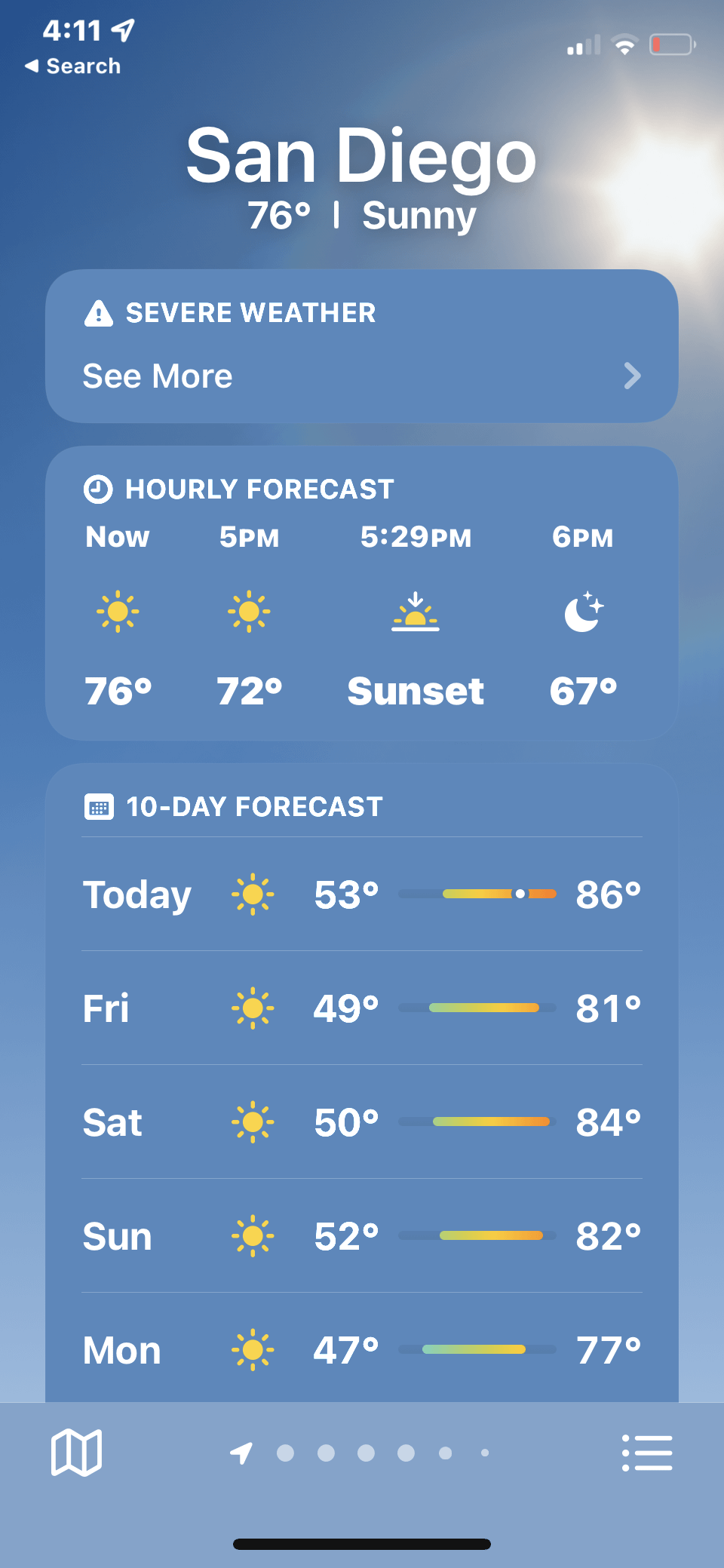Why Excessive Heat Warnings Are Often Missing From Forecasts

Table of Contents
Challenges in Predicting Extreme Heat
Accurately predicting extreme heat and issuing timely excessive heat warnings is far more complex than simply forecasting air temperature. Several factors contribute to the difficulty:
The Complexity of Heat Indices
Predicting heat isn't just about temperature; it's about the heat index. The heat index combines air temperature and relative humidity to determine how hot it feels to the human body. Wind speed and sun angle also play significant roles. This complexity makes precise forecasting challenging.
- Sophisticated models are needed: Accurately calculating the heat index requires sophisticated meteorological models that can factor in all these variables. The accuracy of these models varies depending on the quality of input data and the model's resolution.
- Data sparsity hampers accuracy: In many regions, especially rural areas, the density of weather monitoring stations is insufficient. This data sparsity makes accurate heat index calculations difficult, especially for localized heat extremes.
- Microclimates impact predictions: Urban heat islands, for instance, can experience significantly higher temperatures than surrounding areas. These microclimates make broad-scale predictions less effective at the local level, where heat warnings are most needed.
Limitations in Meteorological Models
Existing weather models, while constantly improving, still have limitations in accurately predicting localized heat extremes. This is particularly true in urban areas, which experience the urban heat island effect.
- High-resolution models are necessary: To capture the localized variations in temperature and humidity that contribute to extreme heat, models need extremely fine resolution. This requires significant computational power and resources.
- Data quality is crucial: The accuracy of any model depends on the quality of the input data. Inaccurate or incomplete temperature and humidity readings from sensors directly impact predictive accuracy.
- Ongoing model improvements: Researchers are constantly working to improve weather models by incorporating new data sources, refining algorithms, and improving model resolution to better predict and forecast extreme heat events.
Communication Gaps and Prioritization
Even when accurate predictions are available, effective communication is crucial for disseminating excessive heat warnings to the public. Several communication challenges exist:
Thresholds and Warning Criteria
The criteria used to trigger excessive heat warnings vary significantly between regions and countries. These thresholds may not always be sufficiently sensitive to capture emerging health risks associated with rising temperatures, particularly for vulnerable populations.
- Standardization is needed: A consistent, nationally (or internationally) agreed-upon threshold for issuing excessive heat warnings is essential to ensure uniform warnings and public understanding.
- Public awareness is crucial: The public needs to understand the different levels of heat warnings (e.g., advisory, watch, warning) and what actions to take at each level.
- Vulnerable populations require consideration: Warnings must consider the heightened vulnerability of certain populations, such as the elderly, children, and individuals with pre-existing health conditions, to heat-related illnesses.
Competition for Forecast Attention
Other weather events, such as severe storms or hurricanes, often command more media attention and public prioritization than less visually dramatic but potentially equally dangerous heat waves.
- Effective communication strategies are key: Strategies are needed to highlight the severity and potential impacts of heat waves effectively.
- Public education campaigns: Raising public awareness about the dangers of extreme heat and the importance of heat safety is crucial.
- Integration with public health: Heat warnings must be better integrated into public health messaging and emergency preparedness plans.
Resource Constraints and Data Availability
The capacity of meteorological agencies to monitor, predict, and communicate extreme heat is often limited by resource constraints and data availability.
Understaffing and Funding
Meteorological agencies may lack sufficient staff and funding to comprehensively monitor and issue warnings for all potential heat events. This under-resourcing directly impacts the timeliness and accuracy of excessive heat warnings.
- Increased investment is necessary: Investment in weather monitoring infrastructure, forecasting technology, and staff training is crucial.
- Improved training programs for forecasters: Investing in training programs to enhance the skills of weather forecasters in predicting and communicating heat risks is essential.
Data Gaps in Monitoring Systems
Insufficient weather monitoring stations, particularly in rural or developing regions, lead to incomplete data for accurate heat predictions.
- Expansion of weather station networks: Expanding the network of weather monitoring stations is essential to improve data coverage and accuracy.
- Alternative data sources: Exploring alternative data sources, such as citizen science initiatives and satellite imagery, can supplement ground-based observations and improve data availability.
Conclusion
The absence of excessive heat warnings in many forecasts is a multifaceted issue stemming from prediction challenges, communication gaps, and resource limitations. Improving predictive models, standardizing warning criteria, strengthening communication strategies, and addressing data gaps are essential steps to ensure timely and effective excessive heat warnings become a standard part of weather forecasts. Take action – stay informed about your local weather forecasts and understand the heat index to better protect yourself from the dangers of excessive heat. Learn about heat safety measures and advocate for improved weather services and more comprehensive excessive heat warnings in your area.

Featured Posts
-
 Cool Wet And Windy Weather Alert For San Diego County
May 30, 2025
Cool Wet And Windy Weather Alert For San Diego County
May 30, 2025 -
 Unlocking Whidbey Clam Mysteries A Citizen Science Approach
May 30, 2025
Unlocking Whidbey Clam Mysteries A Citizen Science Approach
May 30, 2025 -
 Adu Mekanik Kawasaki W175 Vs Honda St 125 Dax Mana Yang Lebih Unggul
May 30, 2025
Adu Mekanik Kawasaki W175 Vs Honda St 125 Dax Mana Yang Lebih Unggul
May 30, 2025 -
 Understanding Live Now Pay Later Services A Comprehensive Overview
May 30, 2025
Understanding Live Now Pay Later Services A Comprehensive Overview
May 30, 2025 -
 Stjerne Kritiserer Dansk Chef Mangel Pa Respekt
May 30, 2025
Stjerne Kritiserer Dansk Chef Mangel Pa Respekt
May 30, 2025
